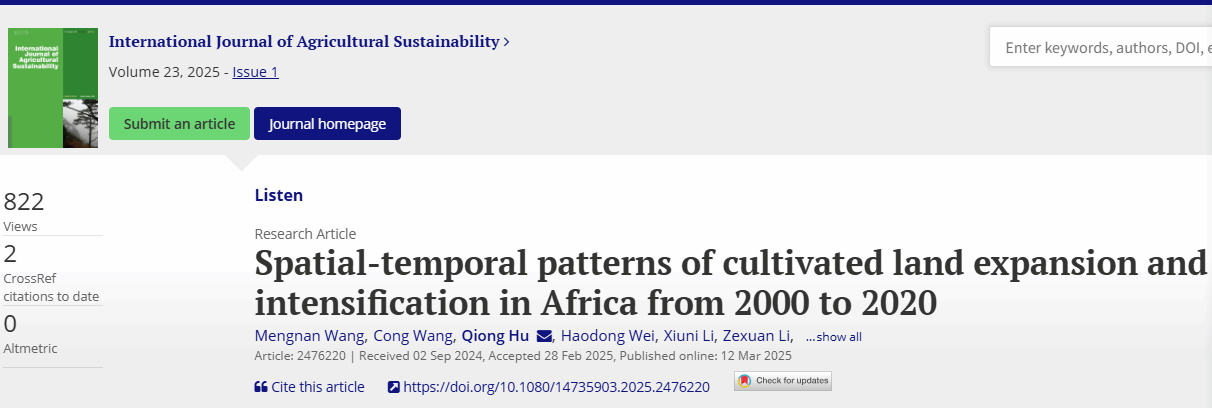
ABSTRACT
Africa, despite its rich diversity of food resources, faces severe food crises. Understanding spatial-temporal patterns of cultivated land expansion and intensification levels in Africa is crucial for enhancing food security. This study, based on the GlobeLand30 datasets, revealed changes in African cultivated land from 2000 to 2020, by characterizing the area dynamics, intensification levels, and their coupling patterns. Then, we adopted the partial correlation analysis to explore the relationship between food security and both cultivated land expansion and intensification. Results indicated that the net cultivated land area increased by 6.00 × 107 ha from 2000 to 2020. Over 62% of cultivated land remained stable, and conversions mainly occurred between cultivated land and natural vegetation (forest, grassland, and shrubland). During this period, the intensification level was 35.94% in Africa, and East Africa > North Africa > West Africa > Central Africa > Southern Africa. In addition, nearly half of the countries exhibited high cultivated land intensification levels and area expansion (H-E). We also found that improving intensification levels played pivotal roles in alleviating food insecurity for coastal and middle-income countries, and expanding areas were more important for enhancing food security in inland and low-income countries. Our findings provide a comprehensive overview of cultivated land change in Africa over the past 20 years, serving as a valuable reference for alleviating food insecurity, promoting sustainable economic development, and preserving environmental integrity amidst a growing population.






